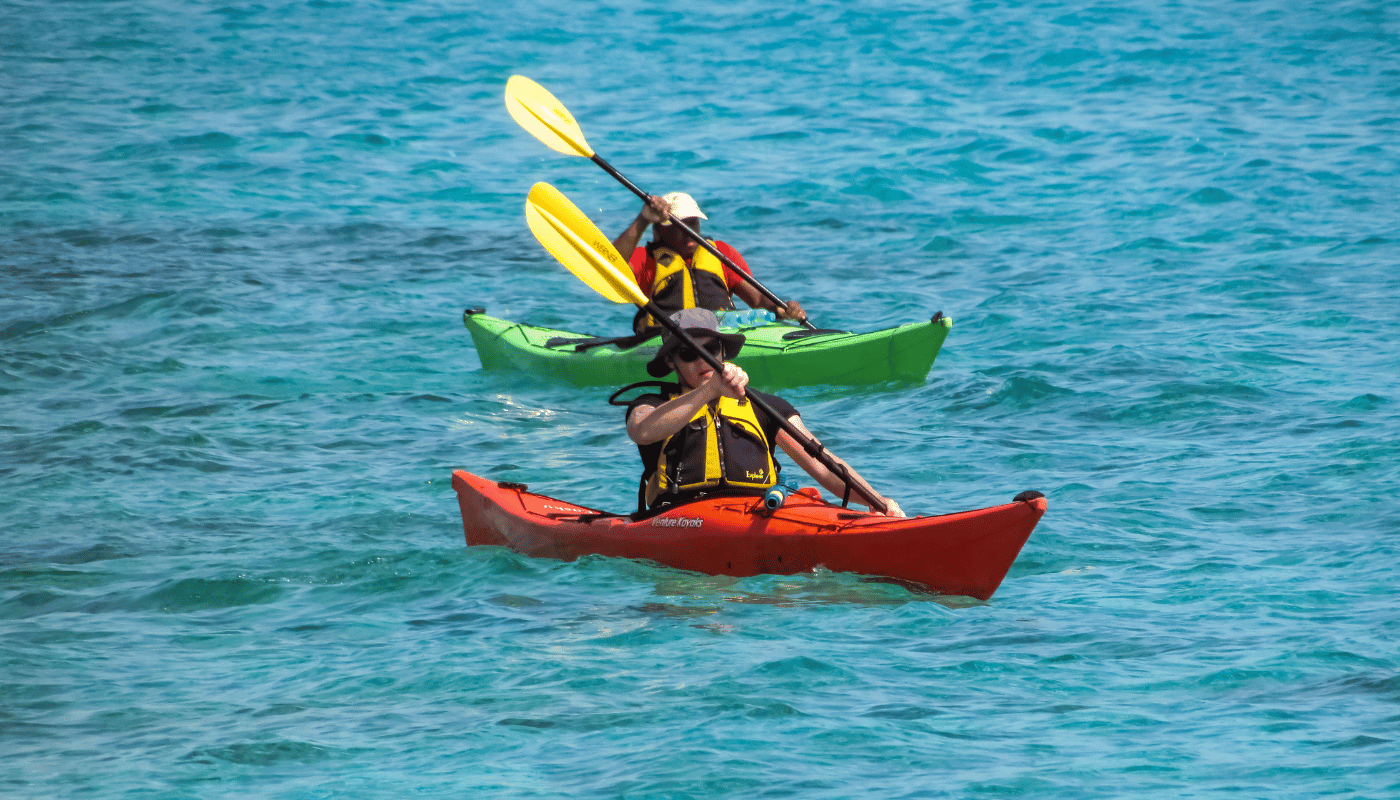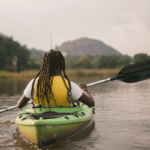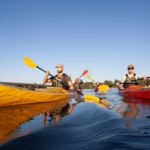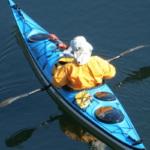Kayaking is a popular and accessible water sport enjoyed by individuals of all ages. It offers a full-body workout, connects you to nature, and provides a sense of adventure, whether you’re paddling down a river or gliding across calm lakes. However, when considering introducing a child or beginner to kayaking, one important question often arises: how old to kayak? The answer to this question is not one-size-fits-all. It depends on a combination of factors, such as the child’s physical ability, coordination, water safety knowledge, and the type of kayaking they wish to do.
Typically, children as young as 4 or 5 can start kayaking, especially in calm, shallow waters with supervision. At this age, kids can learn basic paddling techniques and get comfortable with the sensation of being in a kayak. However, it’s important to note that readiness for kayaking is not solely determined by age. A child’s maturity level, ability to listen and follow instructions, and comfort with the water are crucial considerations. It’s essential for parents or instructors to assess the child’s readiness before letting them take on more challenging kayaking environments, such as fast-moving rivers or open waters.
On the other hand, adults can typically begin kayaking at any age, as long as they have no underlying health conditions that may impair their ability to paddle or sit for extended periods. For older adults, kayaking can be a wonderful low-impact exercise, but it’s still important to gradually build strength and technique. People over the age of 60 may want to consult a doctor before beginning, especially if they have any medical concerns.
Safety Guidelines for Kayaking by Age
When it comes to kayaking, safety should always be a top priority, regardless of age. However, safety requirements can vary depending on the kayaker’s age and experience level. Children, teens, and adults all have different needs when it comes to kayaking safety, and it’s important to follow appropriate guidelines for each age group.
For younger children, it’s critical to have constant adult supervision, even if they are experienced swimmers. A child’s ability to react to sudden changes in water conditions or to handle the kayak in rougher water is limited by their size and strength. This makes it even more important to ensure they are equipped with the proper gear. A life jacket is essential, and it should be US Coast Guard-approved and fit the child’s weight and size appropriately. Additionally, children should only kayak in calm, controlled environments with shallow waters and minimal current.
Teens and adults, while more capable of handling the physical and mental demands of kayaking, should also take precautions. For teens, it’s important to encourage responsible behavior on the water, such as wearing a life jacket and avoiding kayaking in strong currents or unpredictable weather. Adults should also be cautious and avoid pushing their limits, especially when kayaking in unfamiliar or challenging environments. Older adults, in particular, should consider their physical health and stamina, ensuring they are fit for the activity and have access to safety equipment like paddles with ergonomic handles or specialized kayaks that provide more stability.
Essential safety tips for kayaking based on age group:
- Children: Always supervise, use a properly fitted life jacket, and kayak in calm waters.
- Teens: Encourage safety awareness, use appropriate safety gear, and avoid strong currents.
- Adults: Ensure physical fitness, use ergonomic paddles, and kayak in suitable conditions.
- Older Adults: Consider health status, ensure stability in the kayak, and use appropriate safety equipment.
Safety is a key factor in ensuring an enjoyable kayaking experience for all ages. For families introducing children to kayaking, starting with small, calm lakes and making sure the child is comfortable with the water can go a long way in preventing accidents.
Benefits of Kayaking at Different Ages
Kayaking offers numerous benefits for people of all ages, from children learning coordination to adults enjoying the health benefits of a low-impact sport. For young children, kayaking provides an excellent opportunity to develop physical coordination, balance, and strength. It’s also a fantastic way to introduce them to water safety early on, which is a skill they’ll use for a lifetime. As kids get older, kayaking can help build endurance and stamina while fostering a love for nature and the outdoors.
For teenagers and young adults, kayaking can serve as both a recreational activity and an effective way to stay in shape. It’s a full-body workout that engages muscles in the arms, legs, and core, helping to improve strength and cardiovascular health. Kayaking also provides an outlet for stress and is a great way to connect with friends, whether paddling together in a group or competing in kayaking events. For those wondering how old to kayak, teenagers are usually at the perfect age to push their skills further, either by participating in group paddling trips or by exploring more challenging bodies of water.
For adults, kayaking offers a variety of health benefits, including stress relief, increased cardiovascular fitness, and improved joint health. Because kayaking is a low-impact sport, it’s particularly appealing to people who may have joint issues or are looking for a more gentle form of exercise. It can also be a great way to spend time outdoors, whether you’re paddling on a tranquil lake or navigating a river. Older adults can benefit from kayaking too. It helps with joint mobility and cardiovascular fitness, and can be a social activity as well, fostering connections in local kayaking communities.
Different Types of Kayaks for Various Age Groups
Kayaking is a versatile activity that offers distinct benefits for people of all ages. For children, it provides a fun and engaging way to develop essential physical and cognitive skills. Kayaking helps young kids build hand-eye coordination, balance, and core strength, which are critical for overall physical development. Additionally, spending time on the water encourages curiosity about the natural world, teaching kids about aquatic ecosystems and fostering a lifelong appreciation for outdoor activities.
Teenagers can gain even more from kayaking as it serves as both a recreational activity and a challenging sport. It offers a full-body workout that strengthens muscles, improves cardiovascular health, and enhances endurance. For teens, kayaking can also boost mental health by reducing stress, encouraging mindfulness, and providing a break from the demands of school or extracurricular activities. Participation in kayaking groups or competitions also builds social skills, teamwork, and self-confidence.
For adults, kayaking is an ideal low-impact exercise that fits into busy schedules while delivering impressive health benefits. Paddling works the arms, shoulders, and core, helping to maintain strength and flexibility. It also offers cardiovascular benefits, making it a great option for individuals looking to improve heart health without the strain of high-impact sports. Additionally, kayaking is a relaxing activity that reduces stress and promotes mental well-being. Whether you paddle solo on a serene lake or join a group for a kayaking tour, the activity offers a perfect escape from the hustle and bustle of everyday life.
| Age Group | Physical Benefits | Mental Benefits | Social Benefits |
| Children | Improved coordination, strength | Curiosity, focus | Bonding with family and peers |
| Teenagers | Strength, endurance, fitness | Stress relief, confidence | Teamwork, social skills |
| Adults | Cardiovascular health, mobility | Relaxation, mental clarity | Group activities, outdoor fun |
| Seniors | Joint health, balance | Reduced anxiety, well-being | Community engagement |
Older adults can also benefit significantly from kayaking. It is a gentle activity that promotes joint mobility, strength, and balance, which are critical for maintaining independence as we age. Kayaking can also provide a social outlet, as many local kayaking clubs cater to older participants, offering opportunities for community and connection. For seniors, staying active through kayaking can reduce the risk of chronic illnesses, such as arthritis and heart disease, while improving overall quality of life.
Choosing the Right Kayak for Different Ages
Selecting the right kayak is crucial for ensuring a safe and enjoyable experience, and the choice largely depends on the age, size, and skill level of the paddler. For children, lightweight kayaks with smaller paddles are essential to accommodate their shorter reach and lower strength. Kid-friendly kayaks are typically made from durable materials like plastic and often feature additional safety measures such as grab handles and shallow seating.
Teenagers, who tend to have more strength and skill, can handle slightly larger kayaks with more advanced features. Recreational kayaks designed for calm waters are a good starting point, while more adventurous teens may prefer sit-on-top models or kayaks with room for extra gear. These options allow them to explore a variety of water conditions while still prioritizing safety and ease of use.
Adults, depending on their goals, have the widest range of kayaks to choose from. Beginners might opt for recreational or inflatable kayaks, which are stable and easy to maneuver, while more experienced paddlers may choose touring kayaks or sit-in models for longer trips. Factors such as the paddler’s height, weight, and intended use (e.g., lakes, rivers, or oceans) should guide the selection process. For larger adults or those looking for extra stability, tandem kayaks or models with wider hulls are often recommended.
Seniors should prioritize comfort and stability when choosing a kayak. Lightweight models that are easy to transport and enter or exit are particularly important for older paddlers. Inflatable kayaks are an excellent option as they combine portability with stability, making them ideal for leisurely paddling on calm waters. Seniors may also benefit from kayaks with adjustable seating to ensure proper back support during longer outings.
No matter your age, choosing the right kayak is key to enjoying the sport safely and comfortably. When asking how old to kayak, it’s just as important to consider the equipment that matches your needs and ensures the best experience possible.
Choosing the Right Kayak for Different Ages
Choosing the right kayak for different age groups is essential for both safety and enjoyment. For young children, the kayak should be lightweight, stable, and easy to maneuver. A single, sit-on-top kayak with a wide base and low profile is ideal. These kayaks are designed to provide maximum stability, ensuring that children feel safe while learning to paddle. Additionally, many kayaks for young kids come in bright colors, making them more visually appealing and easier to spot on the water.
As children grow older and develop more kayaking skills, the type of kayak they use should evolve accordingly. For kids between the ages of 8 to 12, a smaller, lighter sit-inside kayak might be appropriate. These kayaks offer more control and speed, making them suitable for learning more advanced paddling techniques. It’s important that the kayak fits the child’s body size and strength, as an ill-fitting kayak can cause discomfort or make paddling difficult.
For teenagers and adults, the choice of kayak will depend on the type of kayaking they plan to do. Recreational kayaks are great for beginners and those who want to paddle on calm lakes or rivers, while more advanced kayaks are designed for those interested in whitewater or sea kayaking. When choosing a kayak for adults, factors such as weight, length, and material are crucial for determining how easy it will be to transport and how stable the kayak will be in different water conditions. How old to kayak is an important consideration when selecting the appropriate equipment, as the kayak must suit both the person’s size and experience level.
Key factors to consider when choosing a kayak for different age groups:
- Size and weight of the kayak.
- Stability and ease of use for beginners.
- Type of kayaking (recreational, sea, or whitewater).
- Safety features, such as paddling stability and buoyancy.
- Age-appropriate design and comfort.
After selecting the right kayak, remember that safety gear, including life jackets and helmets, is crucial, no matter the age. It’s important to fit the gear properly, as it ensures safety and enhances the kayaking experience.
Derivation
In conclusion, kayaking is an enjoyable and rewarding activity that can be started at a young age, but knowing requires consideration of a variety of factors. The right age for kayaking isn’t just about physical ability; it’s also about maturity, coordination, and safety awareness. For younger children, kayaking in calm, shallow waters with proper supervision and safety gear is a great introduction. As they grow older, they can gain more independence, taking on more challenging kayaking environments as they develop their skills.
The benefits of kayaking at different ages are undeniable. For children, it fosters motor skills, coordination, and a connection to nature. For teenagers, it offers a physical challenge and opportunities for socializing. Adults, on the other hand, find kayaking to be an excellent way to stay fit and relieve stress while enjoying the great outdoors, but for those who are ready for adventure, you can learn from this article what sea kayaking is all about.. Kayaking is a versatile sport that offers something for everyone, regardless of age.
The key to safely enjoying kayaking at any age lies in choosing the appropriate equipment, including the right kayak and safety gear. For children, stability and ease of use are paramount, while teenagers and adults may look for more advanced features, depending on their kayaking goals. Additionally, ongoing safety education and practice are essential to ensure a positive experience.
Ultimately, determining how old to kayak is less about a strict age requirement and more about ensuring that the individual is ready in terms of physical ability, safety awareness, and mental preparedness. With the right training, equipment, and supervision, kayaking can be an enjoyable and safe activity for people of all ages.





